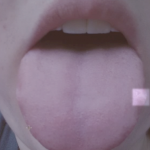When the immune system reacts to a threat inside cavities, it sometimes delivers a viscous fluid to the affected region. The fluid, which contains soluble fibers, spreads over the target surface and quickly hardens. In this way, it engulfs the infection, preventing its spread.
While this works well in most cases, the process, known as fibrosis, can block breathing when it occurs on the membrane covering the lungs. Decortication of lungs is the surgical removal of accumulated fiber to treat the condition, known as fibrothorax.
Overview
The pleural cavity is a narrow space between the lungs and the chest wall that is enclosed by membranes on both sides. As lungs expand and contract, thereby creating contact between the two membranes and pulling them apart respectively, a special fluid inside this space reduces friction.
Underlying diseases, poisoning, or injuries inflicted on the chest may cause pathogens to enter the pleural cavity. The goal of the immune system when introducing the fibrous fluid to the region is to disable movement of pathogens and protect nearby surfaces from infection.
When the tough layer forms inside these membranes however, it interferes with the flexibility of lungs, making them unable to expand to their normal capacity. Multiple infections over a long period may cause the fibers to pile up, eventually leading to extreme pain and even lung failure.
In the early stages, this condition may be treated using prescription drugs. However, past a certain point, the surgery may be the best available choice.
Lung decortication procedure – in steps
All the initial steps followed when preparing for other surgeries, including seeking of the patient’s consent and basic safety training, apply to decortication. Patients will also have to go through the following:
Assessment
The doctor will order radiography to confirm if the fibrothorax exists. This will also help to determine whether decortication is really necessary. Most surgeons will only proceed to other steps after ensuring that the accumulation poses danger to the lungs, and that noninvasive methods cannot clear away the fibers.
Afterwards, a chest CT scan will be necessary to determine the exact location of the layer. CT scans also help to clarify the cause of the condition.
With diseases like tuberculosis or pneumonia, surgery can proceed after administration of certain medication. However, if cancer is the cause, this surgery may not work. In addition, the goals of the surgery may not be achieved if the lung has already collapsed.
The procedure
Video Assisted Thorascopic Surgery (VATS) is the most preferable surgery method due to the little damage and pain that it causes. It involves the insertion of a small camera and a special scalpel into the chest cavity. The surgeon then follows digital images transmitted on a screen to peel out the foreign layer.
VATS however only works when the fibrous layer is not too extensive. For more serious accumulation, open surgery will be necessary. Here, a cut is made in between the ribs. At times, a rib may have to be dislodged to give better access to the target area.
When satisfied that the surface is clear, the surgeon closes other openings and connects a chest pipe. The patient may spend some hours in the operation room before getting transferred to ICU.
Postoperative care
The patient will stay in ICU for 12 to 24 hours. If there is no incident, they will then be transferred to the ward but still kept under close watch for another 48 hours.
Special attention will be given to chest fluids; if they accumulate past safe limits, the patient may be taken back to the operation room. During this stage, liquid intake will also be kept to a minimum.
When the patient stabilizes, the chest pipe will be disconnected. A radiograph will then be done to ensure that the disconnection has not caused any serious damage. The patient will then stay under watch for a few more days depending on the doctor’s recommendation.
Risks
Decortication of lungs has its own dangers that the patient must be prepared for. One of these is the potential damage that this procedure may cause to the lungs, heart, and blood vessels. New infections may also arise in the thoracic cavity.
Loss of blood in physiologically weak patients may lead to further complications or even death. At times, surgeons may refuse to operate on persons with highly compromised immune systems to avoid such incidences.
In addition, the decortication does not guarantee that the lung will be restored to its normal working capacity; it might already have collapsed before or during the operation.
Fortunately, newer technologies are improving the outcome of this and other surgeries. Patients stand higher chances of recovering completely today than they did some years back.
Conclusion
Decortication of lungs is a reliable way of treating fibrothorax. However, the procedure also has its own risks. If the operation goes through successfully, it takes about three to five weeks to heal.
